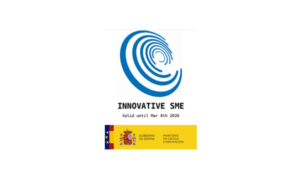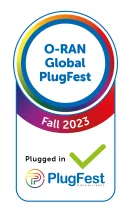THE RAN AUTOMATION JOURNEY
Part 2 – Open RAN is a game changer
Written by Alejandro Medina, CTO
Published on 15th February 2024
Open RAN cloudification
The O-RAN ALLIANCE was formed in 2018 with a mission, as explained on their website, “to transform the Radio Access Network industry towards [a] truly open, intelligent, virtualised and fully interoperable RAN.” The alliance’s Open RAN specifications are grounded in the principles of network infrastructure cloudification – hardware/software disaggregation and network function virtualisation – and multi-vendor interoperability, with well-defined open interfaces between architectural elements.
While new market entrants such as DISH and Rakuten have deployed Open RAN in greenfield networks, established Tier-1 MNOs have been slow to adopt, and industry observers discount the possibility that a multi-vendor Open RAN ecosystem will emerge in the next few years. The recent news of Ericsson’s winner-takes-all deal with AT&T has added the oxymoron “single-vendor Open RAN” to the telecom vernacular.
Open RAN Intelligent Controller for AI-driven RAN automation
Nevertheless, a critical component in the Open RAN architecture is being embraced by Tier-1 MNOs and leading RAN equipment vendors: the RAN Intelligent Controller (RIC), which is responsible for Self-Organizing Network (SON) functions as part of the Service Management and Orchestration (SMO) framework. Advocates envision RIC-based RAN automation fulfilling the unrealised promise of SON by transcending the inherent limitations of SON Apps running on vendor-proprietary, legacy RAN infrastructure.
The Open RAN RIC specifies:
- A Near-RT RIC supporting xApps with control loops operating at timescales of 50-200 milliseconds
- A Non-RT RIC supporting rApps with control loops operating at timescales greater than 500 milliseconds
- Standard xApp and rApp interfaces for communicating with other elements in the Open RAN RIC architecture
Reimagining C-SON applications as Non-RT RIC rApps
The RIC was initially conceived for Open RAN networks but some vendors are starting to position the RIC as the next-generation RAN automation platform for virtualised, cloud-native RAN infrastructure, regardless of the extent the network adheres to Open RAN standards. Vendors are using the term “open vRAN” to describe these types of networks, which might support only the Open RAN fronthaul interface for remote radio units.
MNOs now have the opportunity to reimagine C-SON applications as Non-RT RIC rApps. For example, industry leader Ericsson’s Intelligent RAN Automation platform now supports a Non-RT RIC interface for rApps. MNOs building out 5G networks can deploy new rApps for intelligent RAN automation but also port existing C-SON Apps to the Non-RT RIC, instead of running them on an outdated C-SON platform.
Porting RIC rApps to C-SON platforms
Near-RT RIC xApps for self-optimisation
Near-RT RIC xApps have garnered a lot of attention, given the time-critical nature of RAN self-optimisation functions. For example, advanced 5G new radio functions require near-real-time automation to optimise RAN coverage, capacity and efficient utilisation of radio spectrum. RIC xApps are democratising D-SON Apps, which have previously operated in the proprietary domains of the leading RAN equipment vendors.
Fostering a community of third-party rApp/xApp developers
Widespread adoption of the Open RAN RIC in open vRAN networks has the potential to significantly increase the size of the total available market for rApps/xApps. This would stimulate the growth of a global community of third-party RAN automation software developers who would have the economic incentive to invest in new rApps and xApps.
MNOs would gain access to a large number of innovative rApps and xApps developed by companies with unique technical competencies and intellectual property, allowing them to choose the rApps/xApps that are best suited for the unique requirements of their operational environment. They would also be able to swap out an rApp or xApp and replace it with a better version from another developer.
At least, this is the market vision for intelligent RAN automation enabled by the Open RAN RIC. Part 3 of this series examines RIC platform programming interfaces and the ramifications for developers of RIC rApps/xApps working in different vendor environments. It can get messy when market vision meets reality




